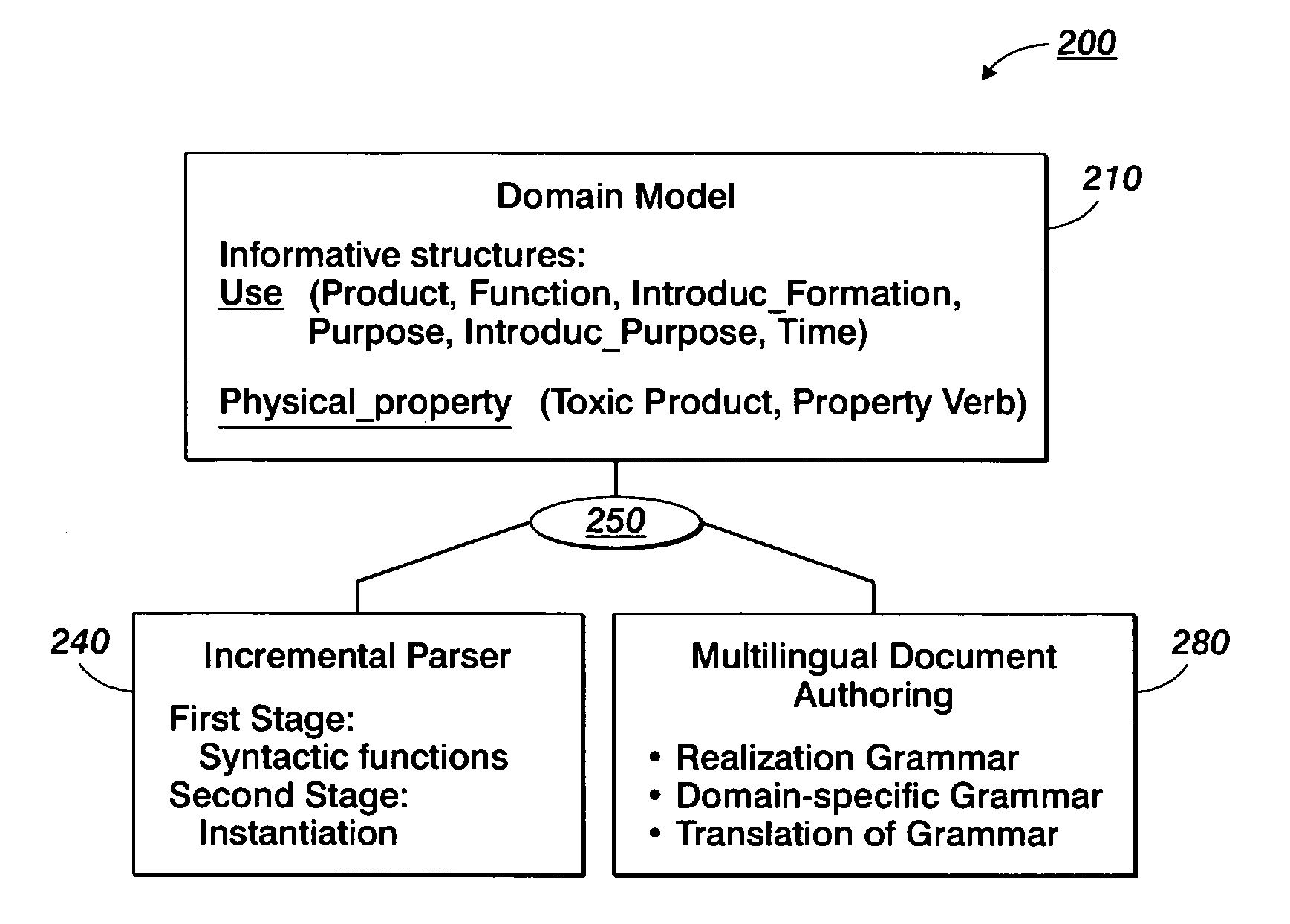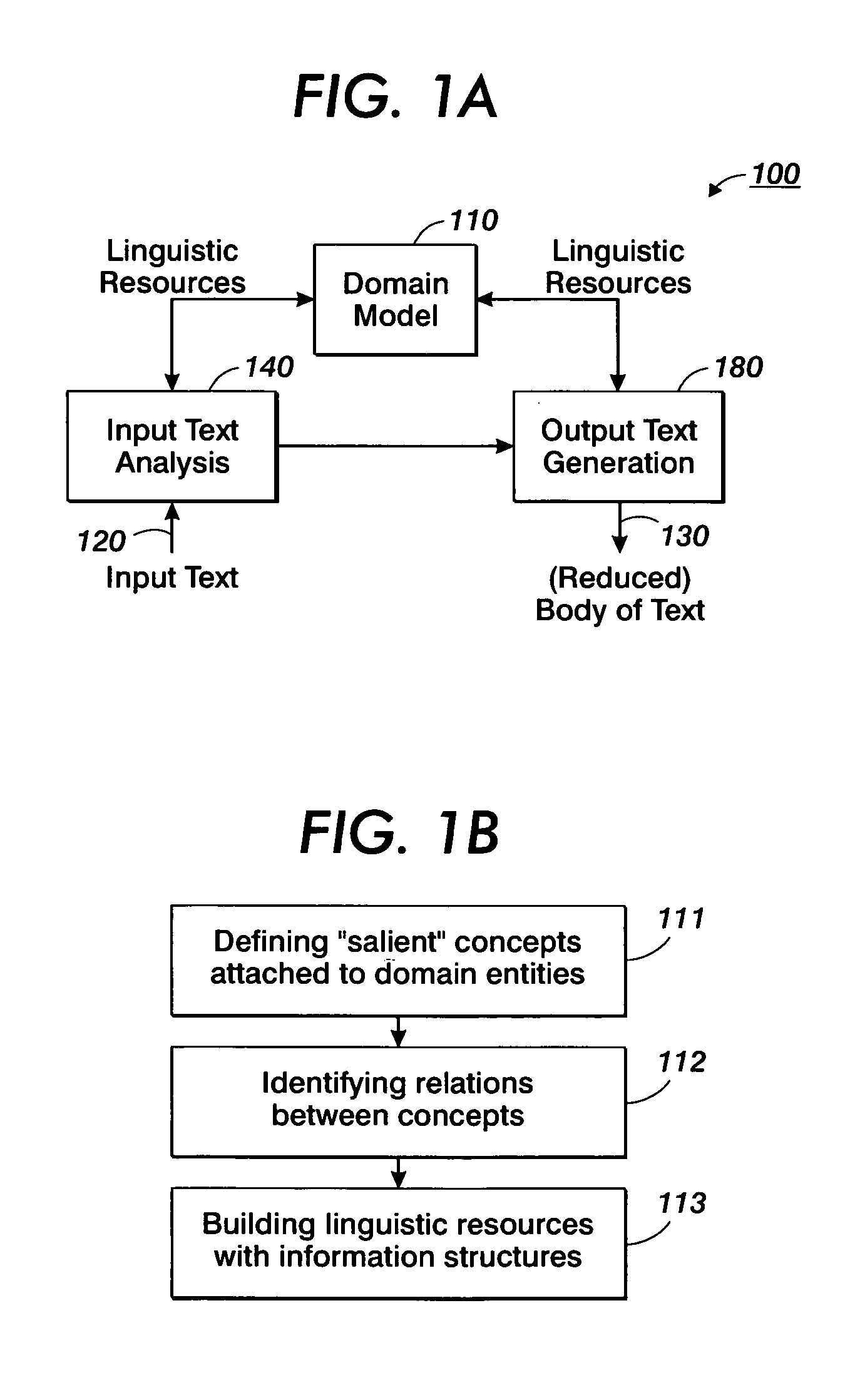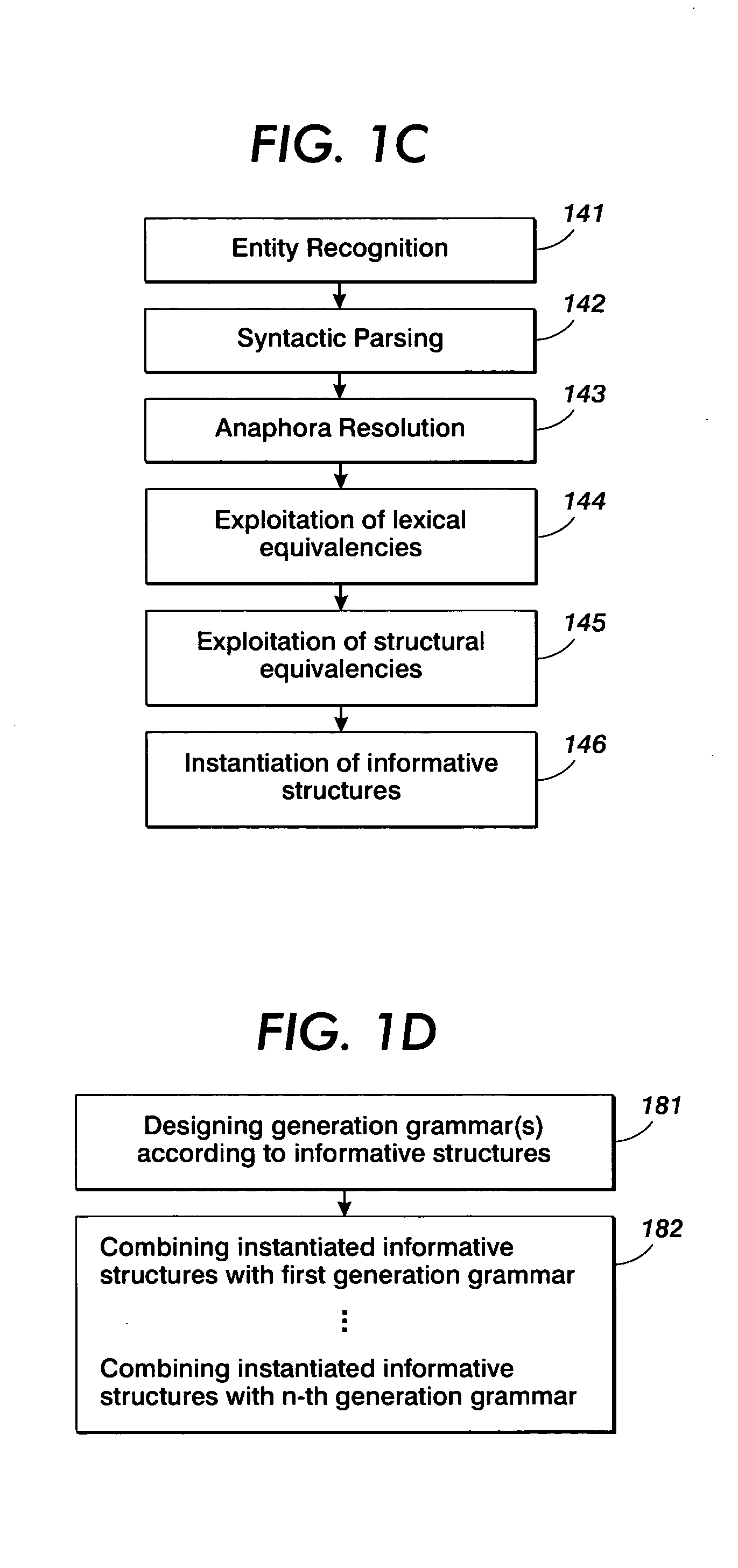Creation of normalized summaries using common domain models for input text analysis and output text generation
a common domain model and text analysis technology, applied in the field of text processing including information extraction, can solve the problems of increasing the difficulty of extracting relevant information from these data that is required for specified applications, large amount of information, though accessible to the person, may not be taken into consideration, and time-consuming task of summarizing the contents of a text that is not provided with a precise and comprehensible abstra
- Summary
- Abstract
- Description
- Claims
- Application Information
AI Technical Summary
Benefits of technology
Problems solved by technology
Method used
Image
Examples
Embodiment Construction
[0041] As summarized, the present invention is based on the concept of analyzing an input text and providing an output text in natural language, wherein in many applications the output text may be reduced in volume compared to the input text. Thereby, in some embodiments, the reduction in volume is related to application and / or user specific criteria. Moreover, it is to be noted that the term “text” as used herein is to be understood as a definite amount of information that may be conveyed by natural language, irrespective of the specific representation of the amount of information. That is, an input text according to the present invention may represent information conveyed by natural language in the form of speech, a written text, or coded data that may be readily converted or reconverted into comprehensible text, i.e., in speech or written text. Thus, an audio file including information containing a text passage may be considered as an input text. Since text specific information i...
PUM
 Login to View More
Login to View More Abstract
Description
Claims
Application Information
 Login to View More
Login to View More - R&D
- Intellectual Property
- Life Sciences
- Materials
- Tech Scout
- Unparalleled Data Quality
- Higher Quality Content
- 60% Fewer Hallucinations
Browse by: Latest US Patents, China's latest patents, Technical Efficacy Thesaurus, Application Domain, Technology Topic, Popular Technical Reports.
© 2025 PatSnap. All rights reserved.Legal|Privacy policy|Modern Slavery Act Transparency Statement|Sitemap|About US| Contact US: help@patsnap.com



